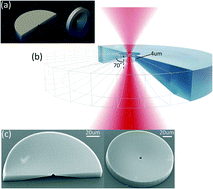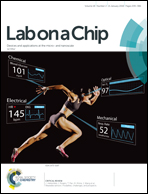Impact of complex surfaces on biomicrorheological measurements using optical tweezers
Abstract
The characterisation of physical properties in biologically relevant processes and the development of novel microfluidic devices for this purpose are experiencing a great resurgence at present. In many of measurements of this type where a probe in a fluid is used, the strong influence of the boundaries of the volume used is a serious problem. In these geometries the proximity of a probe to a wall can severely influence the measurement. However, although much knowledge has been gained about flat walls, to date, the effect of non-planar surfaces at microscopic scale on rotational motion of micro-objects has not been studied. Here we present for the first time both experimental measurements and numerical computations which aim to study the drag torque on optically trapped rotating particles moving near 3D-printed conical and cylindrical walls on-chip. These results are essential for quantifying how curved walls can effect the torque on particles, and thus enable accurate hydrodynamic simulations at the micron-scale. This opens the potential for new sensing approaches under more complex conditions, allowing both dynamic and microrheological studies of biological systems and lab-on-chip devices.



 Please wait while we load your content...
Please wait while we load your content...